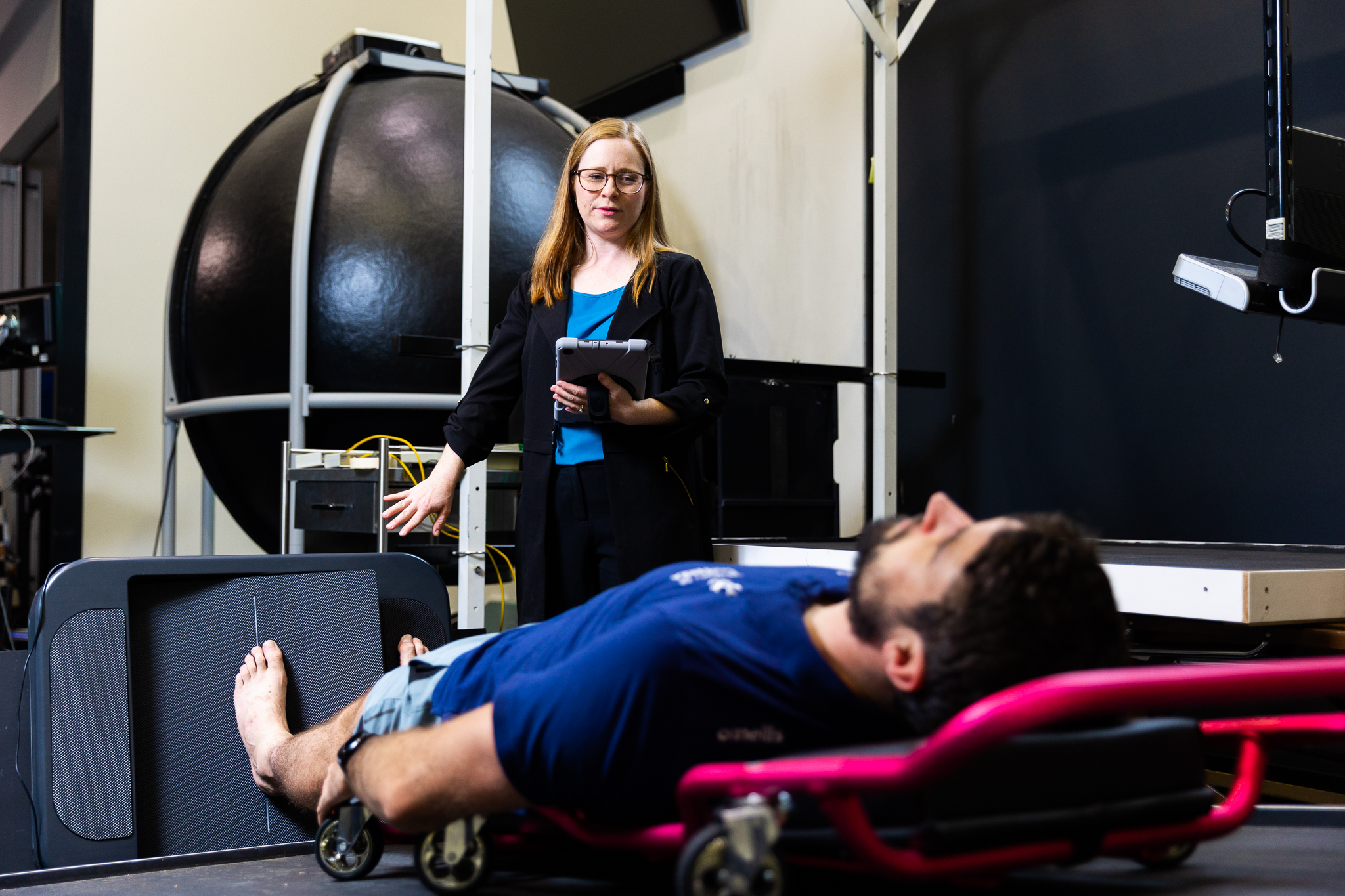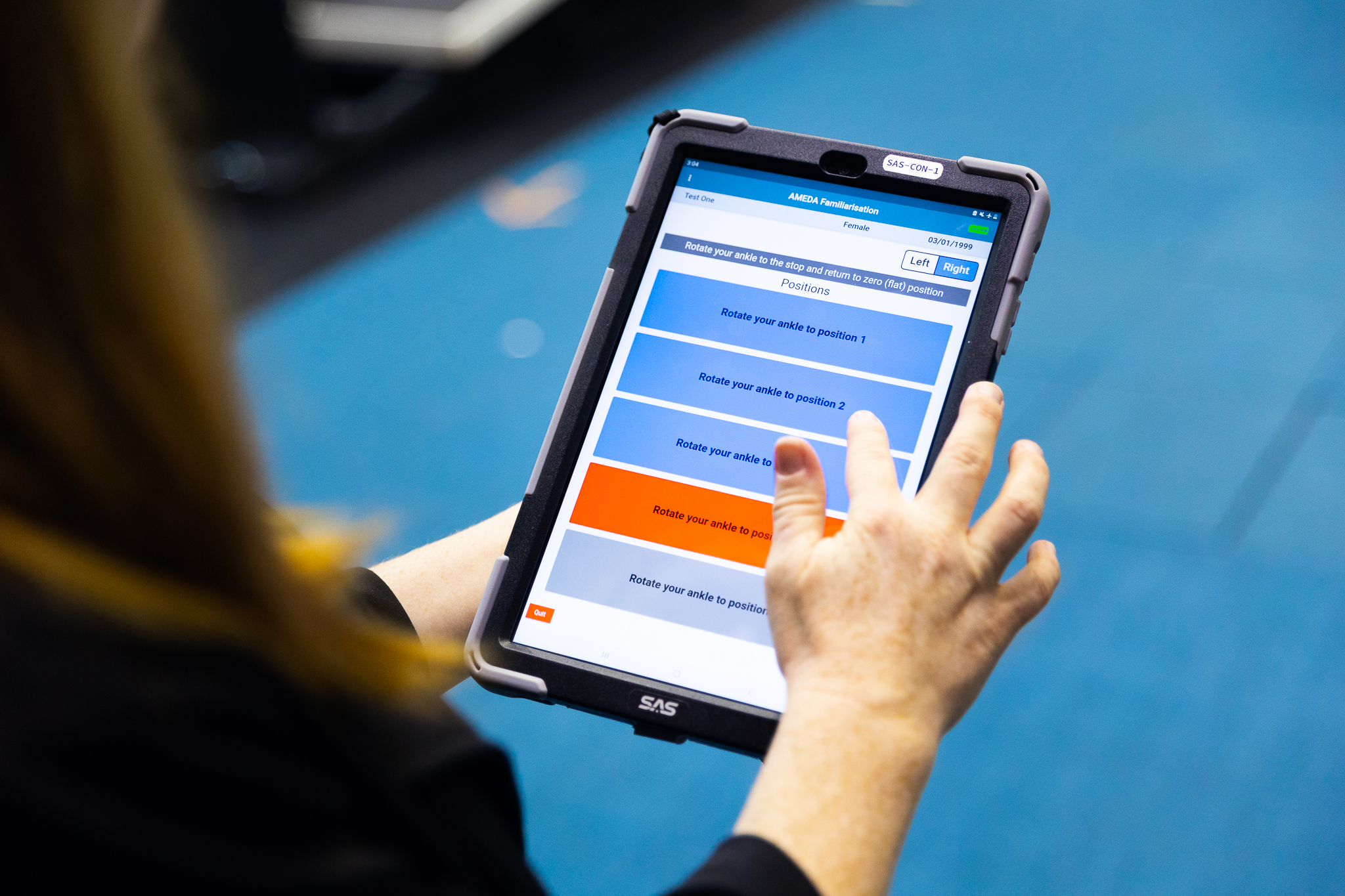Emma Larouche
14 April 2023: University of Canberra researchers have embarked on a new study, collecting data from balance and ankle joint position tests, to form part of an evaluation of new spacesuit designs for people working on the moon.
The study is being carried out by UCRISE PhD candidate Ashleigh Marchant and Professor of Sport and Exercise Medicine Gordon Waddington at the University. It is focused on assessing how proprioception, or joint position sense, is affected by novel environments.

The team is working alongside The United States’ National Aeronautics and Space Administration (NASA) and Massachusetts Institute of Technology (MIT), to look at what may occur to the human body when walking on the moon or Mars.
“Understanding how astronauts will respond in space suits when in moon gravity is critical to optimising safety in such harsh conditions as on the moon surface,” Professor Waddington said.
The study involves standing on a platform for a series of simple balance and ankle joint position tests.
The platform is known as AMEDA – or the Active Movement Extent Discrimination Apparatus. It was developed by Professor Waddington and has been utilised in research at the UC Research Institute for Sport and Exercise (UCRISE) and the Australian Institute of Sport (AIS) for athlete testing. It has also been installed at the Johnson Space Center in Houston, Texas, where astronauts are trained.
To approximate moon gravity, tests are carried out on a specially developed, purpose-built ‘wedge bed’, onto which the AMEDA is attached.
“Lying on the bed at an angle, with your feet on the platform, provides a similar feeling to the loading felt on the moon,” Ms Marchant said.
“The aim of our work is to minimise the rapid loss of movement control function in astronauts who are dealing with a change in gravity that would otherwise occur,” Professor Waddington said.
Textured socks will also be used during the testing, a game-changing piece of wearable technology that Professor Waddington presented to NASA in January 2022.
In February 2023, Professor Waddington and Ms Marchant returned to the United States to present the results from their compression texture sock study at a NASA Human Research Program conference in Texas, which brought together more than 1,000 scientists. Worn within a heavy protective boot, the specialised socks help improve the ability to feel the nature of the surface you are standing on.
“We found that those with poor joint position sense improved their AMEDA scores significantly while wearing the socks, compared to being barefoot. This may have relevance to astronauts with diminished proprioceptive sensitivity following exposure to microgravity or simulated low gravity environments,” Ms Marchant said.

The team is currently seeking volunteers over 18 years of age for the study. They should have had no recent ankle injury, and no medical condition which may affect balance, to attend a single 60-minute session.
“It is a very exciting area of research, and is still beneficial for improving our understanding of the human body right here on Earth,” Ms Marchant said.
“Outside of space exploration, our findings also have the potential to contribute to injury prevention, help with the prevention of falls among the elderly, sport performance, rehabilitation, illness and more!”


